You Can’t Stop Progress – A Friendly Universe Wants AI Art
“You can’t stop progress!” So shouted a little boy after gaining an autograph from ‘Aussie battler’ Bill Hislop in 1994 hit Australian movie, Muriel’s Wedding. The movie swept on, but I remained, pondering the truth of that statement. And I’ve been pondering it ever since.
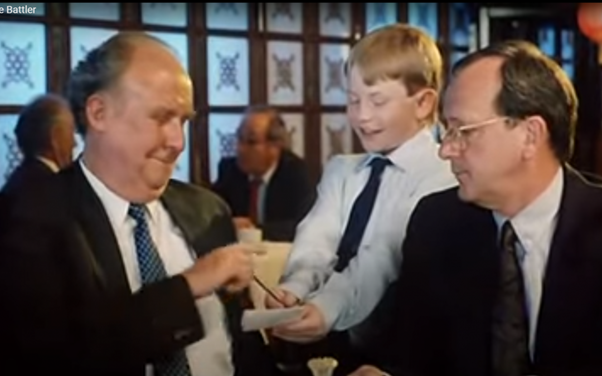
We all have areas in our life where we wish we could stop progress. We wish that our skin would stop wrinkling and sagging, that the kids wouldn’t grow up so fast, and that highrises would stop popping up everywhere. Daily I am torn between mourning the loss of what was and acknowledging the inevitability of ‘You can’t stop progress.’
Fearing change is a basic tenant of being human. After all, we spent hundreds of thousands of years trying to survive in a brutal landscape when even the slightest deviation in our environment could be a precursor to death. And yet, ironically, change is the only constant in our lives. The universe is in a perpetual state of flux, progression, and regression. There is no ‘steady state,’ no standing still. Anything not actively evolving or progressing is by default regressing, reducing, eroding. This is also true of our physical health, our cognitive abilities, our relationships, and our careers.
Progress Is The Natural State Of The Universe
I, alongside many other mystics and physicists, believe that it is the natural state of the universe to constantly seek expansion. In fact, it must do so, because any cessation of expansion results in the immediate commencement of regression, and ultimately, self-destruction.
We all seek expansion of life. It is impossible for us not to do so. Every thought we think leads to another thought. Every desire fulfilled leads to yet another desire. And despite what some puritanical schools of thought may have you believe, it is not only moral for you to want to be more and do more, it’s imperative that you do so. The universe, whether you frame it through the lens of physics, or God, is seeking constant expansion through you, and it achieves that by you becoming all that you can be.
“It is the natural and inherent impulse of life to seek to live more; it is the nature of intelligence to enlarge itself, and of consciousness to seek to extend its boundaries and find fuller expression.”
Wallace D Wattles
I Have Skin In The Game
Before I dig in any further, I should mention that I have skin in the game. I am an artist. A writer. It has been my lifelong dream to see my books on shelves in bookstores. A dream that thanks to advances in technology (a glut of self-publishing, and now the advent of AI text bots) becomes more remote with each passing day.
I foresee a time in the (screamingly near) future when AI can write books almost as well, (or let’s be honest here, better) than the average human. And that buying books ‘solely written by a human,’ will have a novelty factor. While AI may never be able to truly duplicate and distill your unique human experience into words, all it needs to do is hit enough tropes, and beats, in the right order to create pulp fiction that will, for the most part, satisfy the masses.
Arguments Against AI Art
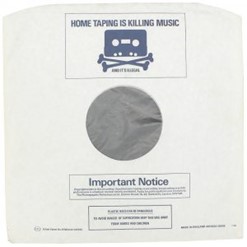
I have seen multiple arguments surrounding AI and seeing as I am an artist and have an online following strongly skewed toward artists, most of the arguments I have seen have been against AI. The arguments are predominantly based on the unfair manner in which the subject material was obtained to train the AI (more on this below,) that the AI is just copying and spitting out other artists’ work and styles (with no credit or compensation to the artist,) that current artists are losing jobs and money because of AI, that generating AI art requires zero skill and originality, and that subsequent generations of humans won’t bother to become artists because AI can do it faster and easier.
Let me address the last point first. Humans have been scrawling on cave walls and rocks, bones and bowls, and anything else they could get their hands on for as long as we’ve been walking upright. There is a deep and primal need within us as a species to create art – a need that won’t be going anywhere in thousands upon thousands of years of evolution. So, you can take comfort in that account, humans will be creating art in multiple forms, for as long as there are humans.
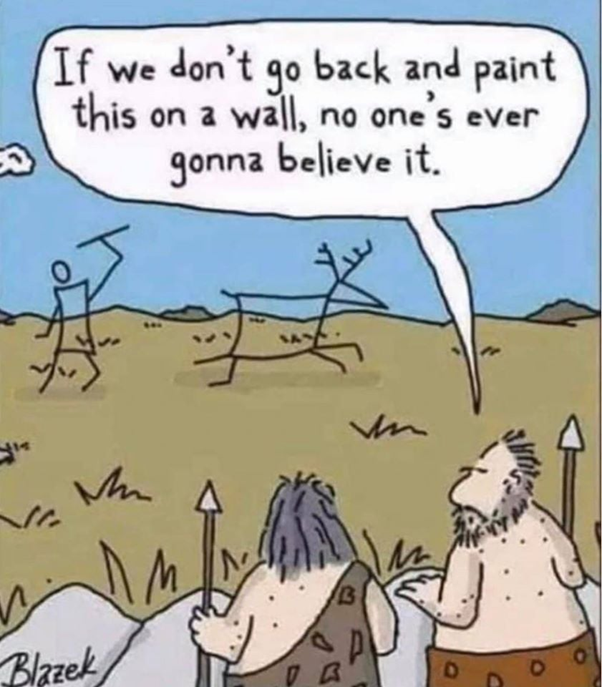
Industry Disruptors
“Digital technology is heralding the next phase of disruption to the global economy, with the emergence of new technologies like blockchain, additive manufacturing, big data analytics, the Internet of Things and Artificial Intelligence. They will not only transform the global economy by constantly redefining consumer expectations and business models, but also engender inclusiveness by providing an avenue through which people can access opportunities and interact with one another.”
– World Bank: Global Connectivity Outlook To 2030
As for AI taking money from the mouths of artists, it is true. AI is an industry disruptor, like many that have come before it (think Kodak versus digital cameras and Uber versus taxis), and many that will come after. And as with all industry disruptors it brings with it an adapt-or-become-obsolete decision point, and that point is upon us all right now.
Furthermore, AI is not just an industry disruptor, but a societal one. It’s going to be the biggest disruptor we’ve dealt with as a species to date. AI is not just coming for our painters, photographers, and writers. It’s coming for our doctors, our statisticians, our drivers, our accountants, and so much more.
AI is coming for all of us in one way or another and no amount of hand-wringing is going to put that genie back in the bottle.
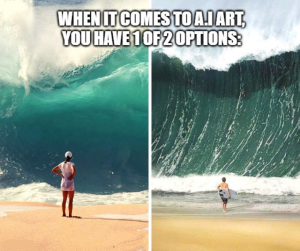
“There is an abundance of opportunity for the person who will go with the tide,
instead of trying to swim against it.” – Wallace D Wattles
There are some ideas, that once conceived by humanity, are so big that they have momentum of their own simply from being thought of.
They spring into existence and begin to gather speed and mass like a snowball rolling down a hill. These ideas cannot be unthought. They cannot be unexpressed. For good or ill they are now part of our collective consciousness. AI, CRISPR, facial recognition and tracking, G.M.O foods, they all have a life of their own and they’re not going anywhere. They are unfurling along Certain Lines of Creation (be that physical or divine) much like the rest of the universe is.
On a personal level, I can honestly say that some of these developments terrify me, and I would very much like them to disappear forever. But when I step back and observe things from a Universal Perspective I can see that there is no such thing as objectively Good or Bad, Right or Wrong. There is only progression and adding to All That Is, or regression and ultimately oblivion.
Most Important Decision We Make
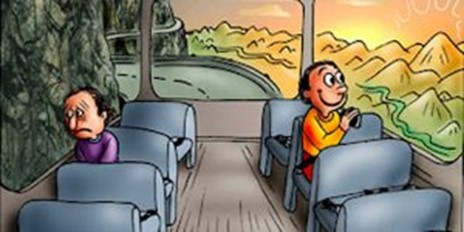
“The most important decision we make is whether we believe we live in a friendly or a hostile universe.”
– (Attributed to) Einstein
I’ve spent my life pondering this question – do we live in a friendly universe, a cold and indifferent universe, or a malevolent universe? And if so, what does that mean for our human existence? In fact, the exploration of this question is the basis of my world-building in my fantasy universe, the Lokamaya.
My conclusion? An actively hostile universe will ultimately self-destruct, and while the development of an indifferent universe is possible, it’s not probable. Leaving us with the likelihood that we exist in a friendly universe that actively seeks expansion of All That Is. And humanity is on the leading edge of that expansion, adding to All That Is with our every thought, word, and action.
In a universe where unimaginably vast tracts of it are nothing more than dissipated energy, we find ourselves living in an exhilarating and powerful world of contrast and Potential Energy. There is power we can harness here on Earth, between the fires and ice, between the top of the mountain and bottom, between the deserts and rainforests. Contrast drives the awareness and creation of Desire. The desire to be There instead of Here. Desire to become That instead of This. Desire to have things and make things and be things. For, everything you see that you don’t want also creates within you an equal and opposite desire for what you do want. And that desire is fuel for your life, and for all of creation.
To whit: A friendly universe, seeking to express and know itself more fully through constant expansion, fosters the development of things along Certain Lines Of Creation that add to All That Is. If we accept that statement to be true then we can see that a friendly universe would want AI art.
What Is Art?
Before we can argue for or against AI art we need to define what constitutes art; a definition that turns out to be as ineffable as the subject matter itself.
The dictionary definition of art says that it is “the conscious use of skill and creative imagination especially in the production of aesthetic objects.” (Merriam-Webster)
Or, to consult our ever-trusty Wikipedia: “Art is a diverse range of human activity, and resulting product, that involves creative or imaginative talent expressive of technical proficiency, beauty, emotional power, or conceptual ideas.”
Or perhaps you prefer this definition from Philosophy Now: “But the content that we instill on or in our chosen media is not in itself the art. Art is to be found in how the media is used, the way in which the content is expressed.
If you accept these three definitions of art then images produced via AI prompting immediately fall under the category of art.
But let me be clear here. Despite the hundreds of hours of spent I have spent on Midjourney generating images, I do not call myself an artist simply because I have used it. Every time I share a generated image online I very deliberately say, ‘Here is something I made on Midjourney,” and not ‘Here is something I made.’ I consider it to be a collaborative process. I am working with AI.
AI prompters, drawing on a wide database of images that were formed via the collective human experience, conceive of an idea they wish to bring to fruition, and (often) by repeated tweaking, refining, recombining, rerolling, and occasionally with some research and community input (e.g. reaching out to forums to find the correct keywords) and the use of third-party programs, take something that existed once only in their minds and bring it forth into the world, to share with the public and to add to All That Is.
This artwork tends to inspire the creation of even more art, as people make their own variations and deviations, shaping it into something that resonates with them. And thus, they are unconsciously perpetuating a thread of artistic creation and inspiration that has been occurring since the dawn of time.
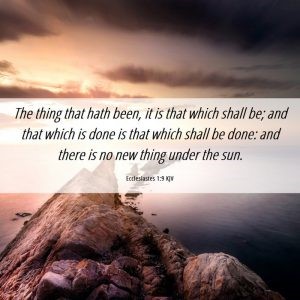
There Is Nothing New Under The Sun
As fantasy author Brandon Sanderson has said, “Humans are great recombiners.” We take everything we have experienced and mash it together to make something that can be considered ‘new.’ But true originality is rare. Case in point; try to think of a color you’ve never seen before, or a sound you’ve never heard. Nothing is created in a void. Your ‘O.C’ [original content] stands on the shoulders of all of human experience that preceded it, and to paraphrase Matt Colville, ‘Your art is only as original as your sources are obscure.’
Every book you’ve read is the sum of all the stories the author has read or heard or watched. The writings of Tolkien have spawned a whole fantasy genre, but he in turn was inspired in part by Beowulf, and Norse mythology, often drawing directly from it (such as for the names of the dwarves). Norse mythology was in turn inspired by proto-Norse mythology, a swathe of which was inspired by an unscrupulous 13th-century Icelandic chieftain named Snorri Sturluson. And no doubt Snorri in turn got the ideas for his stories from things and people that preceded him, and the stories he grew up with. It is wild to me to think I am sitting at my desk in 2022 creating fantasy worlds because some dodgy guy named Snorri made some stories up in the 13th century. But that is the nature of creativity. All art is but a continuation, an exclamation point in the narrative of humanity.
How Are AI Images Created?
Most people have no idea of the behind-the-scenes used to generate your image of ‘Jerry Seinfeld in a Santa suit fighting a kangaroo,’ or whatever other whacky concept you may dream up.
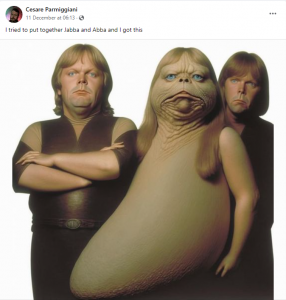
This opening explanation is taken from this article on towardsscience.com.
“For decades now, computer scientists have been using Machine Learning to train computers to understand the world. Computers have filtered through images to learn the differences between particular objects and items. The next progression is to learn to create images.
But how can an AI create images? As you probably guessed, it is a complicated process. To generate images, the machine uses two neural networks. The first neural network is used to create the image based on the text input by the user. The second neural network analyzes the generated image with reference images.
By comparing the photos, it creates a score to determine the accuracy of the generated image. The score is sent back to the original AI system, which can return an altered image for another score. The systems will continue to score likeness until the generated image matches the control image. That final match would then be the generated image that the user sees.”
This continuation of the explanation of how an AI art image is created was taken from this article on artstechnica.com.
“Image synthesis models (ISMs) like Stable Diffusion learn to generate images by analyzing millions of images scraped from the Internet. These images are valuable for training purposes because they have labels (often called metadata) attached, such as captions and alt text. The link between this metadata and the images lets ISMs learn associations between words (such as artist names) and image styles.
When you type in a prompt like, “a painting of a cat by Leonardo DaVinci,” the ISM references what it knows about every word in that phrase, including images of cats and DaVinci’s paintings, and how the pixels in those images are usually arranged in relationship to each other. Then it composes a result that combines that knowledge into a new image. If a model is trained properly, it will never return an exact copy of an image used to train it, but some images might be similar in style or composition to the source material.”
Where Does The Data Come From To Train The AI?
It’s a truth universally acknowledged, that once you upload something to the internet you have, for all intents and purposes, lost control of it.
Different AI models use different datasets to train upon, including LAION (Large-scale Artificial Intelligence Open Network), ImageNet, and Coco. These datasets were obtained through a process known as web scrapping in which bot crawlers trawl the net gathering publicly available images and their alt text, pairing them together, and then compiling them into a massive database.
It’s true that many AI programs were developed on datasets that were scrapped from the web without the content creators’ knowledge, permission, or compensation. And it’s just as true that it was scrapped legally. At least according to the US Courts, who confirmed that TWICE.
“A US court decision on found that scraping data that is publicly accessible on the internet is not a violation of the Computer Fraud and Abuse Act, or CFAA, which governs what constitutes computer hacking under U.S. law.”
Derivative Works Are Legal
If the fact that publicly available images are allowed to be scraped is a blow to you then you may be further dismayed by this following ruling in which Singaporean photographer Jingna Zhang lost a copyright claim against Jeff Dieschburg, who modified her artwork using AI and went on to win money by entering it into a contest. This smacks of unfairness but highlights the need for rapid advancement and changes in copyright laws around the world, which are woefully inadequate when it comes to keeping up with technology. Ironically, I foresee a time soon when the only way legislation is going to be able to keep up with technology is if AI does the legislating (albeit overseen, and signed off by, humans.)
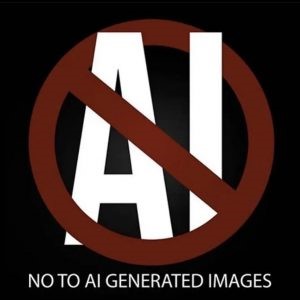
Legal Versus Consensual
Do I think the relationship between AI and artists should be consensual?
Definitely.
Do I think artists should be fairly compensated for their work?
Always.
Just because an artist’s content was obtained legally does not mean it was obtained fairly or consensually. But such is the world we find ourselves living in, and I am ever a pragmatist.
Before you get too hung up on the fairness or unfairness of AI development and use, you should ask yourself where in our late-stage capitalist societies are things being done in a scrupulously fair and ethical way? Is it logical to expect utmost transparency and compensation in the AI arena when we can’t get it from our governments, corporations, and policing bodies?
Again, let me be clear, just because other facets of society are riddled with corruption and duress doesn’t mean we should blindly accept it in the AI arena, but I do think people need to manage their expectations accordingly. This does not mean we should take things laying down. But if you want things to change you are going to need to change them on a legislative level.
Changing your profile picture to a ‘No AI’ logo and imploring your online friends to boycott AI is simply the new ‘Thoughts & Prayers.’
If you want real results and real change, you’re going to have to take real action. (Groups, such as Spawn, have arisen in an attempt to develop a consensual relationship between content creators and the AI world. You can learn more about them here.)
In an ideal world, I would like to see artists compensated each time their images are used as part of the dataset, used in the generation of a new image, or each time their name or style is invoked in a prompt. No doubt the compensation would be negligible, akin to the pay Spotify gives its artists. But it would go some way to ameliorating and recompensating artists.
How this could be done from a technical perspective I have no idea, and a governing body would need to be formed to manage and monitor this and to lobby for more protections and rights for artists. Now is the time for these groups to form. If you feel passionate about protecting artists’ rights in an AI world reach out to other groups of similar mind, or start your own in your country and begin lobbying for legislative rights and changes today. Now is the time to set the foundation for the future of AI and art.
How To Check If Your Content Is Part Of A Dataset
You can upload your artwork to https://haveibeentrained.com/ to see if your content has become part of a dataset.
If you found your text data AND picture together in the LAION dataset and you are an E.U citizen you can take the following steps:
“If you found your name only on the ALT text data, and the corresponding picture does NOT contain your image, this is not considered personal data under GDPR terms. Your name associated with other identifiable data is. If the URL or the picture has your image, you may request a takedown of the dataset entry on the GDPR page. As per GDPR, we provide a takedown form you can use. Upon form submission, we will investigate the request, and if verifiable, we will remove the entry from all data repositories we control. Such repositories include current data stored on our computers and future releases of the datasets. We cannot act on data that are not under our control, for example, past releases that circulate via torrents.”
Artists will also be able to opt-out of the upcoming Stable Diffusion 3.0 dataset, though the how-to is still to be defined.
Ways In Which AI Is Fostering Creativity
Your job as an artist in any industry is to remain relevant. There’s no money in obsoletion. And to remain relevant you need to reframe the way you look at AI. Don’t consider it a hostile takeover, instead, think of it as a symbiotic relationship. That cool robot friend you always wanted to help out with things.
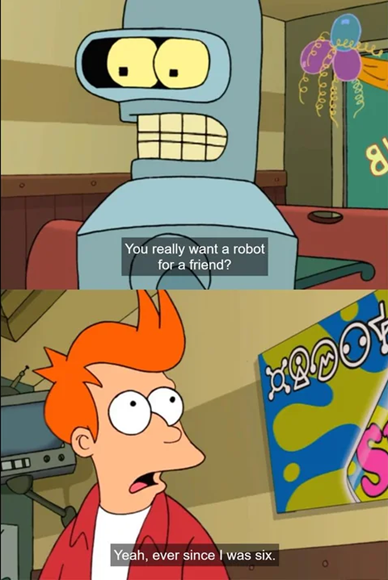
Here are just some of the ways my fellow Midjournians are using AI to bolster their creativity in other areas:
- Creating concept art for immersive theatre
- Creating assets (images) and compiling them together to make something not found anywhere else on the internet
- Generating scenes from novels to help get the staging clear in their minds
- Storyboarding novels and movie scripts
- Tattoo design
- Creating characters for Dungeons and Dragons campaigns
- Creating comic books
- Conceptualizing interior design ideas
- Making character cards for novels
- Making tarot cards
- Inspiration for architectural design
- Overcoming creative blocks (one person broke a 10-year dry spell by using Midjourney)
- Storyboarding game development
- Creating and printing backdrops for theatre productions
- Mood boards, reference images, and textures for traditional and digital paintings
- Photobashing (using multiple digital assets like pictures, textures, and 3D models to create realistic-looking artwork)
- SlideDeck layouts
- Creating tileable textures for 3D models
- Creating wallpaper patterns
- Inspiration for website layouts
- Inspiration for landscaping
- Designing fashion collections
- Concept development for pastry art
- Backgrounds for DJ visuals
- Generating user interface elements websites i.e. buttons, tabs
- Creating maps
- Staging ‘photoshoots’ in the historical past
- Producing illustrations for personalized greetings cards
- Making cookbooks
- Reinventing and then reproducing their own art once more
- using AI art to raise awareness about climate change
- To develop concepts before making them, such as fairy houses made from quilled paper
- Creating card games
- Creating embroidery patterns
- Storyboarding movie ideas
- Creating book trailers
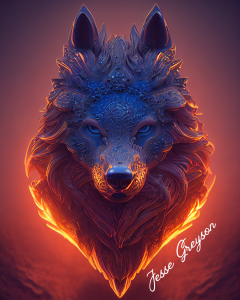
How You Can Make AI Art
This list is by no means definitive and is changing every day.
The Great AI Collaboration
“I would say the term A.I is a bit deceptive because it sets up computers to be on equal par with people. I see AI to be stronger where we are weak, and weaker where we are strong. It’s not a technology that will replace us, it’s a technology that will empower us.”
- Sebastian Thrun, Sleepwalkers Podcast, episode ‘Chocolate, Chicken, Chicken, Cake.’
These days artists need to be a jack of all trades. Not only must they excel at their chosen medium, they also need to be performers (for social media) and marketing gurus, website developers and SEO experts, bloggers and podcasters, YouTubers and graphic designers, accountants and teachers…the list is endless.
But the truth is, most of us only have affinity and skill with a small cross section of the abilities required to be a successful modern-day artist. I cannot tell you the countless hours I’ve wasted tinkering on my website, or learning about SEO, or how Instagram works or any of the plethora of inane things modern authorship requires. Writing that first draft is the least, the most trifling, aspect of the job.
This is where we need to raise our heads up out of fear mongering and pearl clutching and instead ask ourselves, ‘How can AI help me focus on what is really important with my art?’
The 80/20 Rule
“You are hugely more productive at some things than at others but dilute the effectiveness of this by doing too many things where your comparative skill is nowhere near as great.” – The 80/20 Principle: by Richard Koch
The 80/20 principal postulates that 80% of your results in life come from 20% of your efforts. For instance, at work, 20% of what you do typically provides 80% of your results. The other 80% of your time is typically spent on low-yield activities that don’t generate a reciprocal amount of value factoring time and energy they took – for example, answering emails, managing your inbox, and attending meetings.
In life 20% of the people you hang out with probably bring you 80% of your enjoyment, while the other 80%…you see where I’m going with this 😉
Here are some other examples of the 80/20 principle in effect:
- You wear 20% of your clothes 80% of the time
- 20% of criminals commit 80% of crimes
- 20% of drivers cause 80% of all traffic accidents
- 20% of all companies produce 80% of all pollution
- 20% of your clients generate you 80% your sales
- 20% of the holdings in a portfolio are typically responsible for 80% of the portfolio’s
When it comes to your artistic career you will be insanely more skilled at some aspects than others, therefore it pays for you to work to your strengths and outsource everything else as soon as it is feasible for you. This is where harnessing AI can free you up to focus on that 20% of uniqueness and skill that only you can bring to the equation.
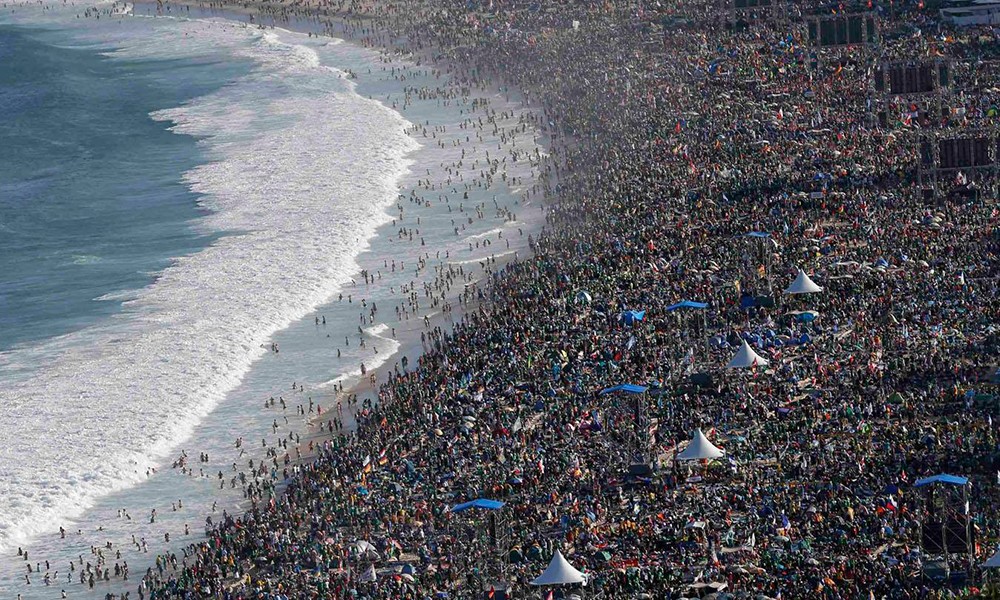
The Most People That Have Ever Existed
Even without the advent of A.I, the world’s population is expected to reach 8.6 billion in 2030 and going forward it is estimated that 90% of the human population, aged 6 years and older, will be online by 2030. Let me say that again – 90% of the 8.6 BILLION people on earth will be online in the next SEVEN YEARS.
Most artists and content creators I know already struggle with visibility – and that’s before we get hit with the next wave of population growth and AI content. Harnessing AI is going to be the only way you can keep from getting swapped in already overcrowded marketplaces in the coming weeks and years.
The Artisanal Artist
Voice, authenticity, and genuine connection are already your best and most powerful marketing tools in cutting through the white noise of competition, and that’s only become more important as A.I enables even more people to become content creators.
The need to double down on your humanity in your artisitic career is highlighted in this quote from the fabulous book, ‘The Marketing Rebellion,’ by Mark Schaefer:
“Brands are built through an accumulation of human impressions…At its core business is about emotion and relationships. We buy from those we know, like, and trust.” Consumers are looking for people to believe in and support. They want to buy into your authenticity and vision.
Where To From Here?
Like everything in life, your attitude will decide your reality.
The tsunami is already here and it’s time to sink or swim. If you ever wished you had lived in the heady gold rush days when life with rife with possibility then take comfort. We are living in the Wild West of technology and there is great opportunity for those that will look for it. It’s time to get in on the ground floor. Ten years from now there will be artists lamenting whatever opportunities they feel they have missed out on if they had just embraced the change now.
Think of AI as your workhorse. Think of it as your 80 percenter. Something that can take the tedium and slog out of your creative process to let you focus on that 20% that is uniquely you. The 20% that makes you stand out from the crowd.
And if, despite reading all this, you are still living in terror of the singularity then fear not. Take solace in the fact that at our utmost end we’ll all be consumed by stars. Every person and every dream. All the serial killers and all the rainbows. All the AI programs and all the cups of coffee on sunny mornings. Eventually, everything will be gone as the universe ends this cycle of expansion and implodes in on itself to start once again. So, make your art now, and enjoy the process.
Want To Support Jesse?
If you liked this article and want to support Jesse you can buy her a coffee

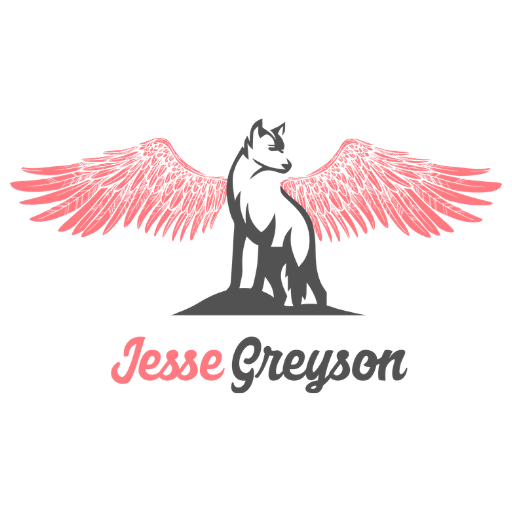
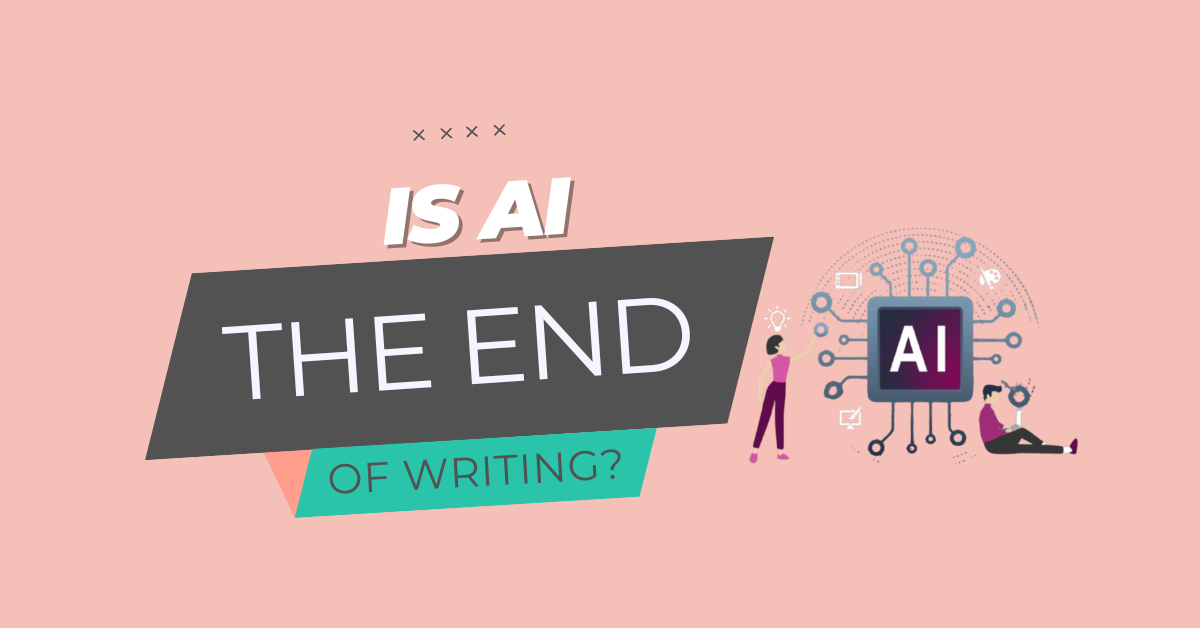
0 Comments